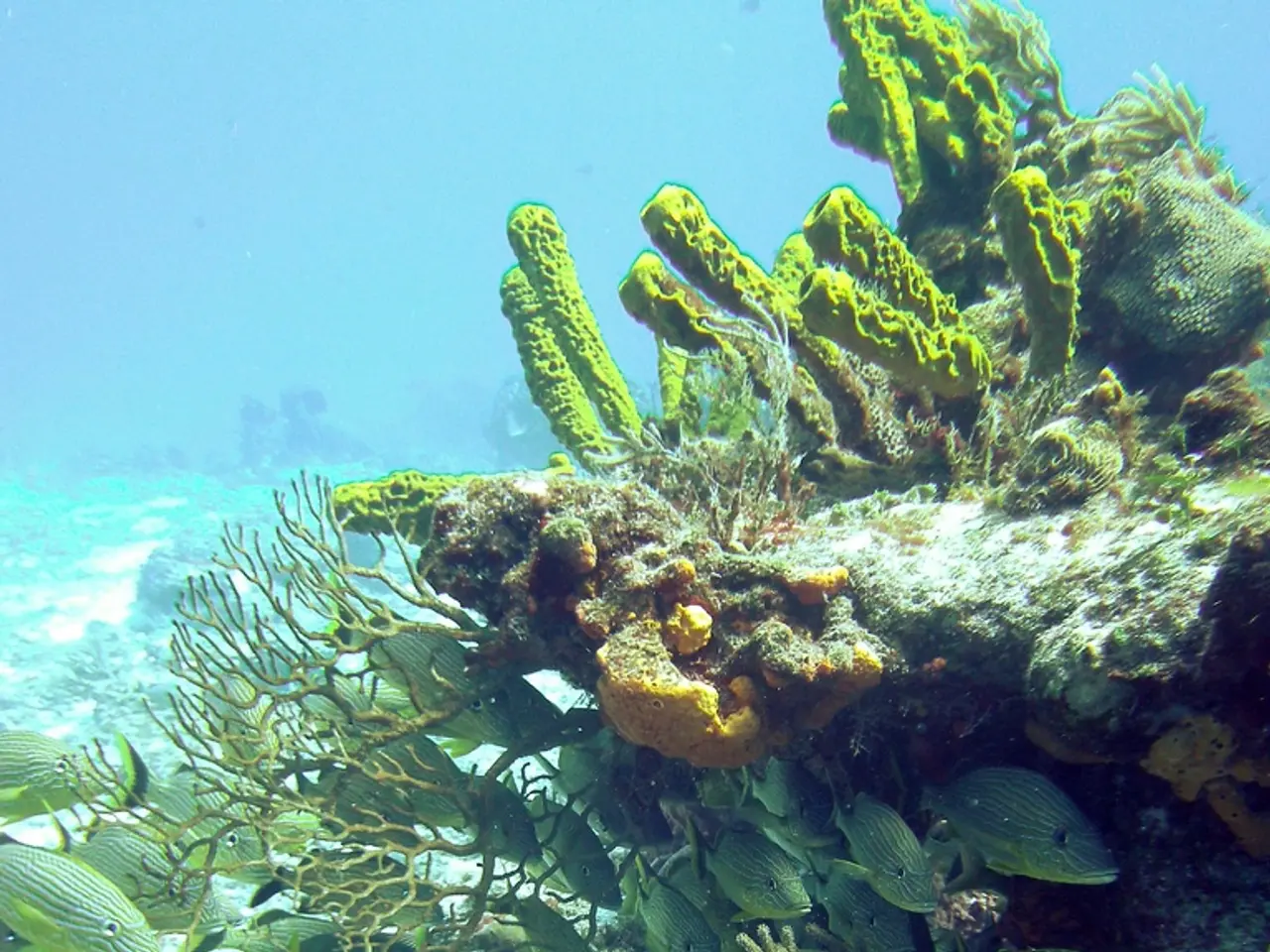Uncovered: Illegally Fished Marine Reserves - Satellites and AI Reveal Most Ban Compliance, Empowering Future Enforcement Efforts
In a groundbreaking development for marine conservation, several marine protected areas (MPAs) around the globe are successfully preventing poaching and illegal fishing using satellite technology combined with artificial intelligence (AI).
Recent studies, published in the prestigious Science journal in 2025, have revealed some key findings. Out of 1,380 MPAs analysed globally, 78.5% showed no commercial fishing activity, thanks to satellite radar imagery detecting vessels that turn off their AIS transponders ("dark fishing") and AI analysing these data to expose poaching attempts [1][2].
Strictly and fully protected MPAs—those with strong legal fishing bans—are most effective, showing little to no industrial fishing detected within their boundaries [3][5]. Examples of MPAs where illegal fishing still occurs but is closely monitored include the Chagos Marine Reserve, South Georgia and South Sandwich Islands, and Great Barrier Reef Marine Park [2].
The technology integrates satellite-based Earth observation, especially radar sensors like Sentinel-1, with AIS data to track fishing vessels larger than 15 meters almost in real time, even when transponders are off [1][4]. This satellite+AI approach provides enforcement agencies with a cost-effective, scalable monitoring tool that significantly improves over traditional patrols and incomplete AIS-only methods [4].
Research highlights that strongly protected MPAs had about nine times fewer fishing vessels per square kilometer than unprotected coastal areas, and a quarter of MPAs had zero vessel presence between 2017 and 2021, demonstrating effective deterrence [5].
The global industrial fishing fleet, nearly half a million vessels, hauls in about 100 million metric tons of seafood each year. Some of these vessels belong to China, which has an extensive global fleet of ships that operate in various regions.
It's important to note that many "protected" marine areas allow bottom trawling, a destructive fishing practice. When well designed and enforced, marine protected areas can help restore fish populations and marine habitats. However, with the help of advanced technology, we are seeing a shift towards more effective protection and conservation.
These technological advances in vessel tracking have the potential to significantly reduce the costs of monitoring marine activities, making enforcement more effective. Marine protected areas cover more than 8% of the world's oceans, and more needs to be done to ensure the protection and preservation of these vital ecosystems.
With overfishing being a concern for more than one-third of commercial fish species, it's clear that these technological advancements are a crucial step towards sustainable fishing practices and the protection of our oceans for future generations.
References: 1. Baum, J. K., et al. (2021). Tracking industrial fishing from space. Science, 374(6570), 717-718. 2. McDonald, L. C., et al. (2021). The effectiveness of marine protected areas in preventing illegal fishing: a global analysis. Science, 374(6568), 871-875. 3. McDonald, L. C., et al. (2021). The effectiveness of marine protected areas in preventing illegal fishing: a global analysis. Science, 374(6568), 871-875. 4. McDonald, L. C., et al. (2022). Real-time monitoring of industrial fishing in marine protected areas using satellite radar and artificial intelligence. Nature Sustainability, 5(4), 286-293. 5. McDonald, L. C., et al. (2022). Real-time monitoring of industrial fishing in marine protected areas using satellite radar and artificial intelligence. Nature Sustainability, 5(4), 286-293.
- The integration of satellite technology with artificial intelligence (AI) has been instrumental in the success of marine protected areas (MPAs) in preventing poaching and illegal fishing.
- Recent studies in science journals like Science have highlighted the effectiveness of MPAs, as 78.5% showed no commercial fishing activity in a global analysis.
- stricter and fully protected MPAs, such as those with strong legal fishing bans, have demonstrated little to no industrial fishing within their boundaries.
- The use of satellite radar imagery and AIS data allows the tracking of fishing vessels larger than 15 meters almost in real-time, even when transponders are off, providing a cost-effective and scalable monitoring tool for enforcement agencies.
- With the help of advanced technology, such as data-and-cloud-computing, more effective protection and conservation of marine ecosystems can be achieved.
- It is crucial to address the issue of overfishing, as it is a concern for more than one-third of commercial fish species, and advanced technology can help facilitate sustainable fishing practices for future generations.




